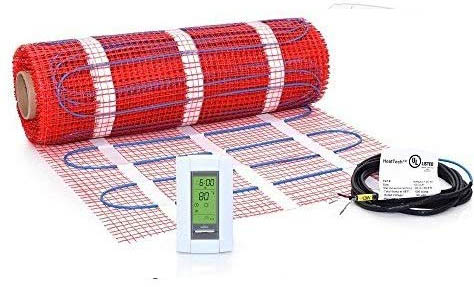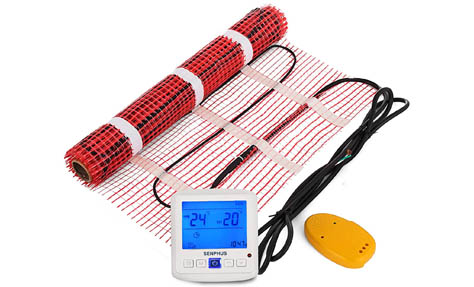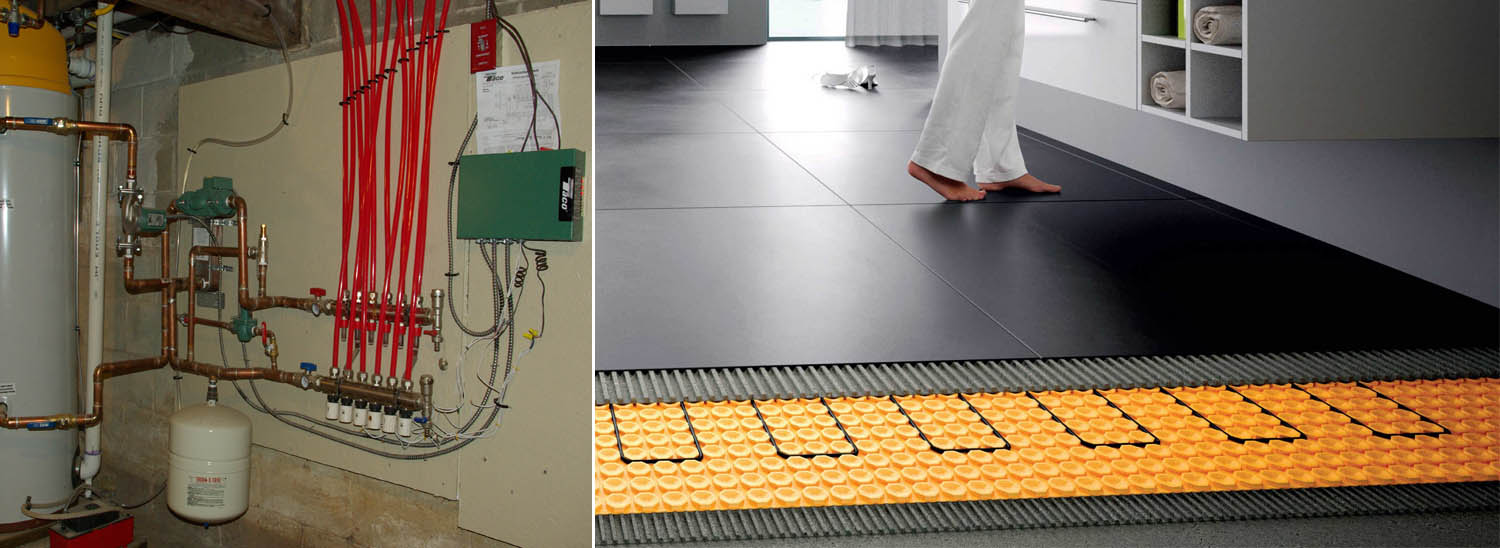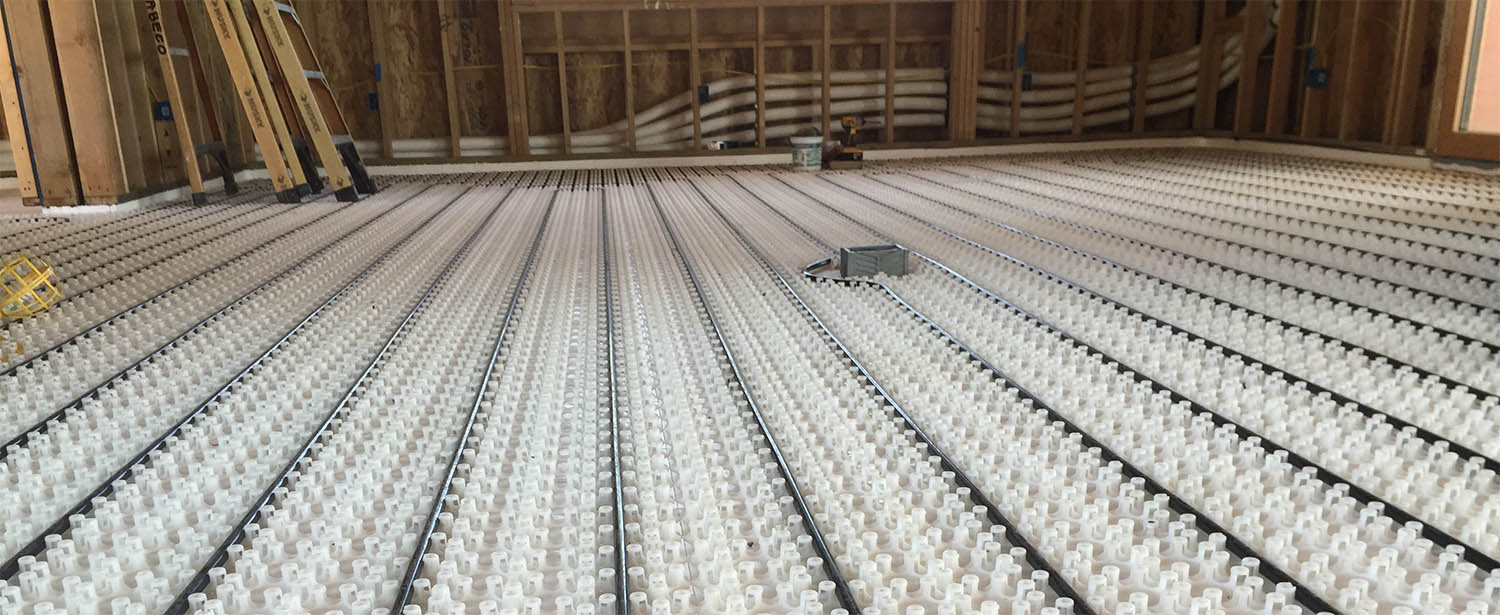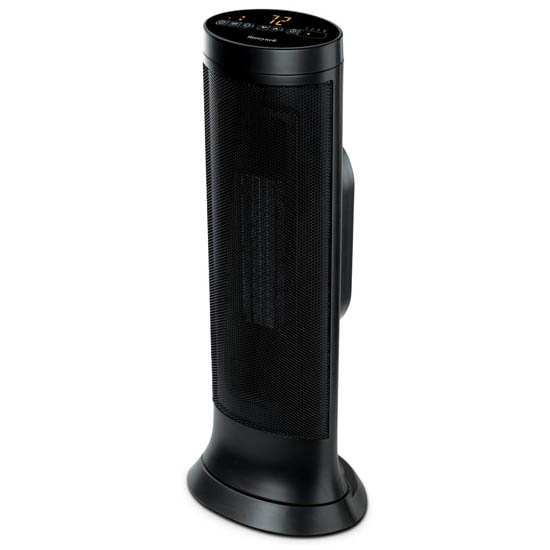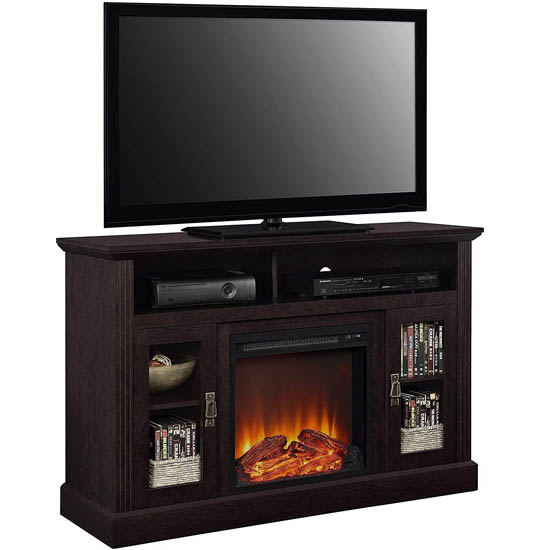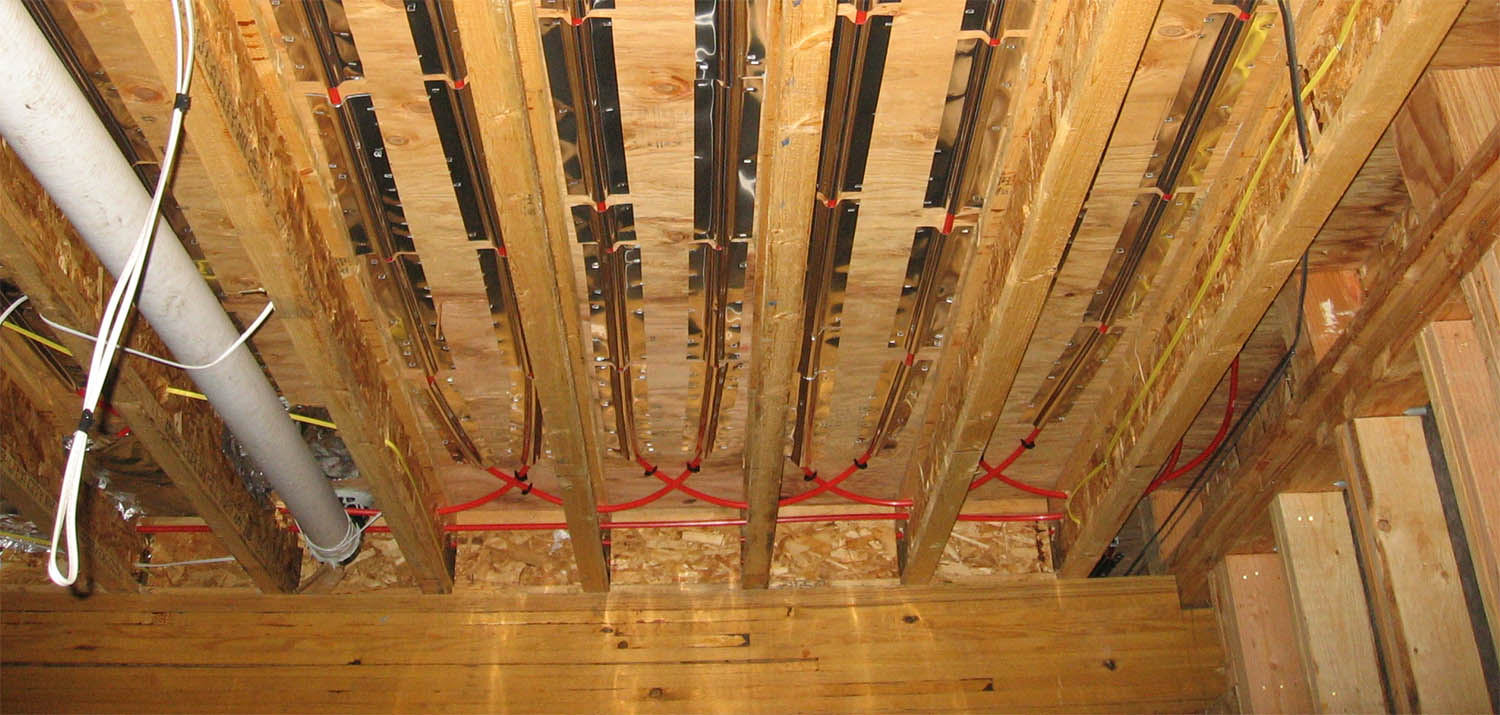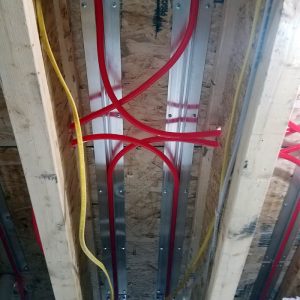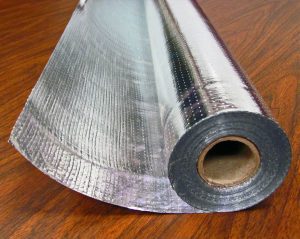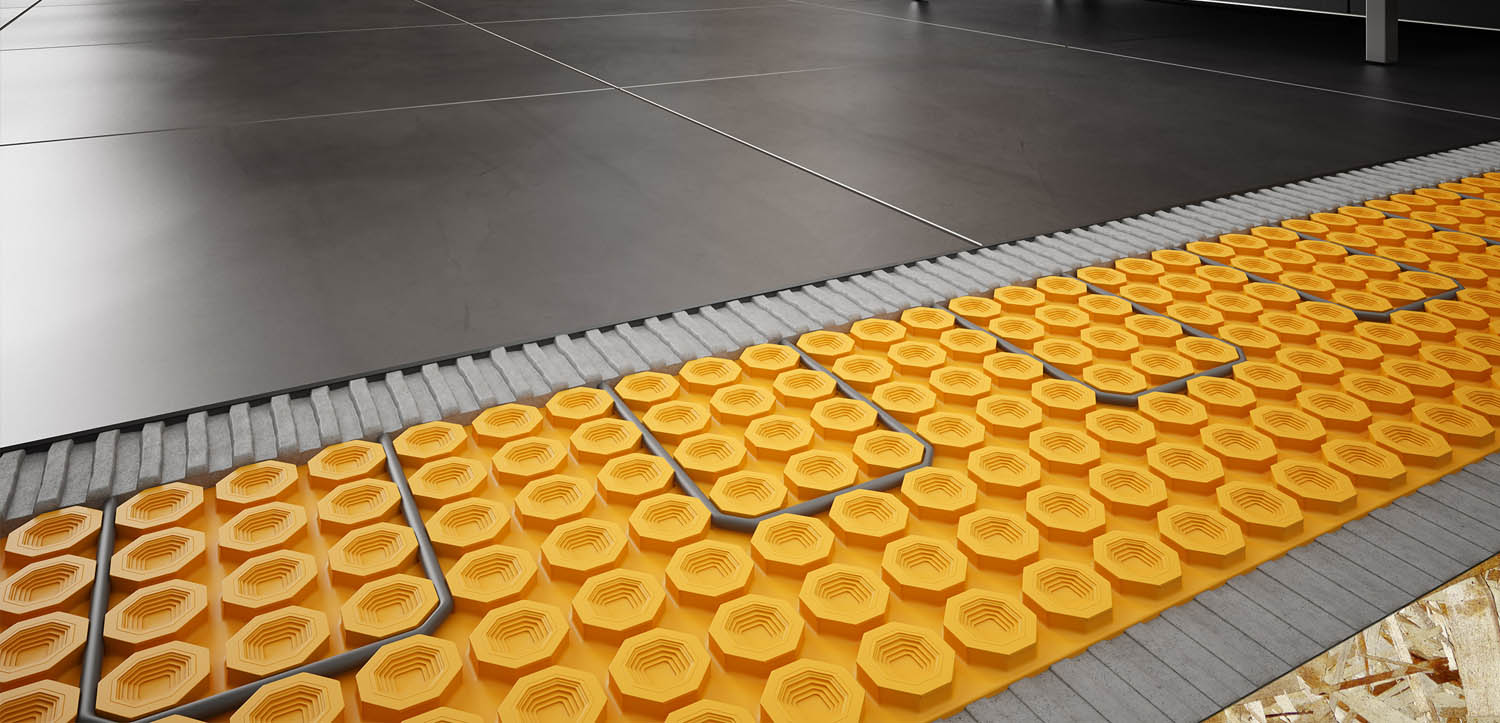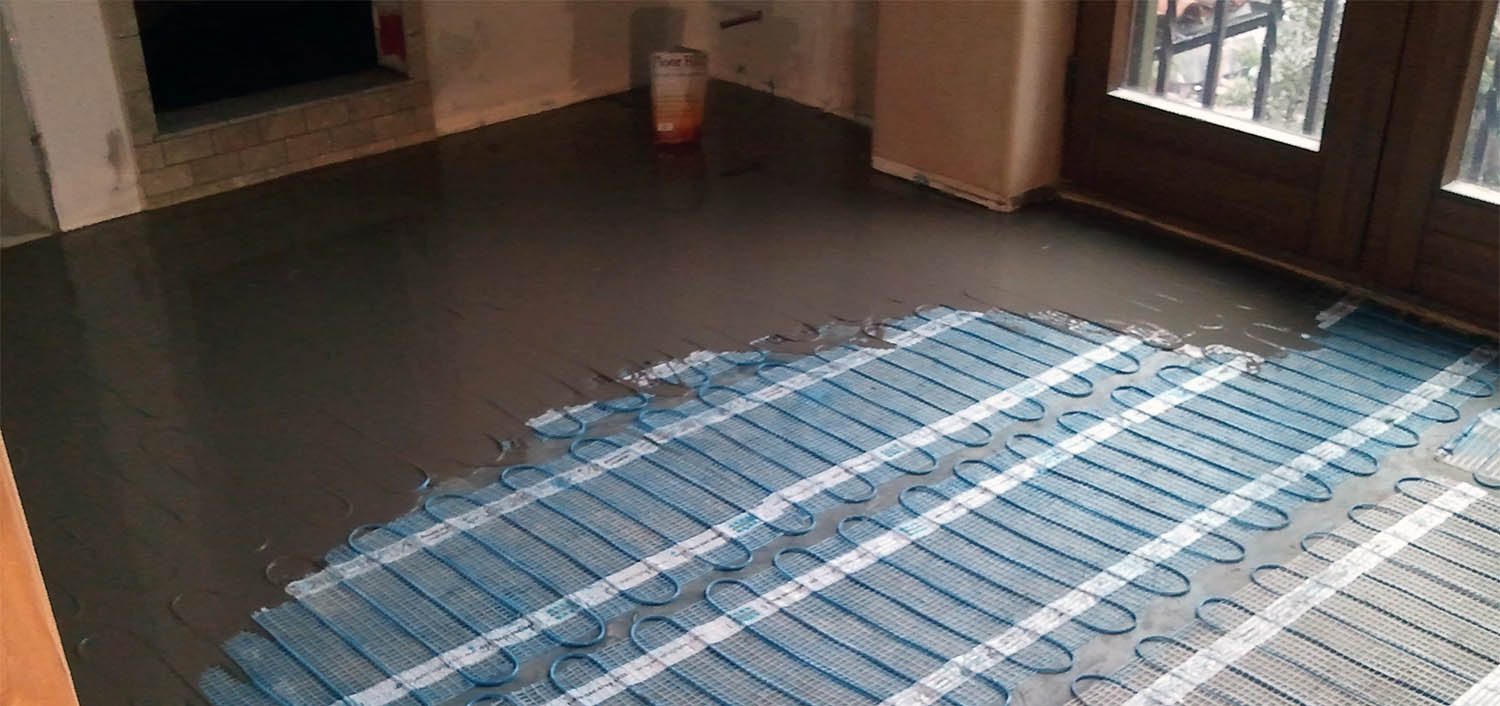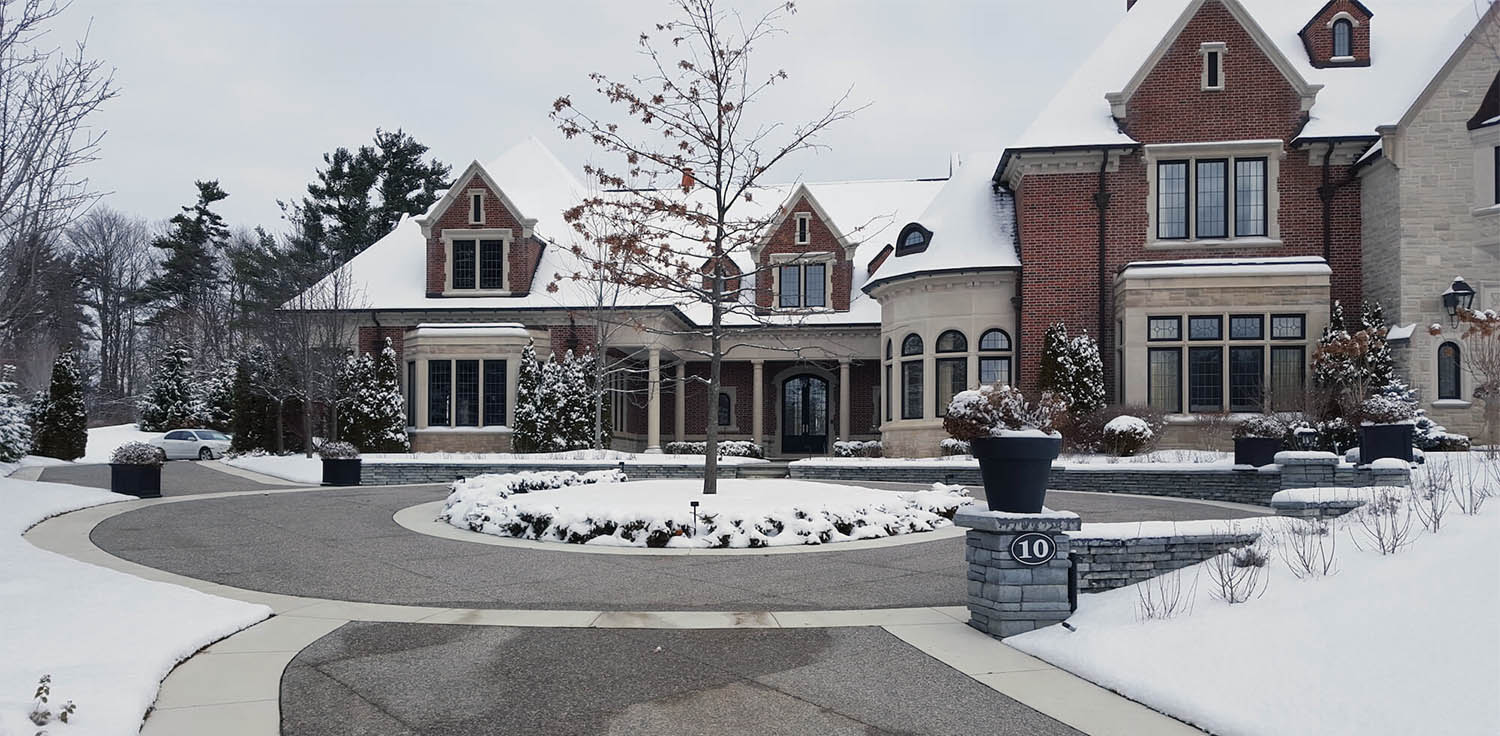Radiant Floor Heating | Everything You Need To Know
We get asked all the time about radiant floor heating. What it is, how much it costs and is it worth it? In this article we’ll answer all those questions and a bunch more.
Floor heating systems, a.k.a. radiant floor heating, are a form of home heating system that heats a home from the floors. Like most customers your probably used to more standard home heating systems like forced hot air or radiators. Radiant systems heat the floor itself and then that heat rises and spreads throughout the house. It’s a more modern heating system with a focus on clean, comfortable, energy efficient design. Although there’s no denying underfloor heating is a great way to warm your home, is it worth the extra cost? Or should you just stick to more traditional radiators, ducts and air vents? This blog post discusses the pros and cons of radiant floor heating and everything else you need to know.
The best heating system is the one you don’t even know is there which is one of the major benefits of radiant heat. No more radiators clanking in the night. No more vents periodically whooshing in hot air. And no more ducts spewing out dust and allergens all over the house. Just an even blanket of heat right at your feet. That’s the appeal of radiant floor heating. It truly is an invisible way to heat your home. But radiant heat systems have a lot more advantages then just aesthetics. They’re also a highly efficient way to heat a house that increases comfort levels as they reduce energy costs.
How Does Radiant Floor Heat Work
In a radiant heat system, the warmth is supplied by either tubes filled with hot water or electric wires buried underneath the finished floor. The heat rises through the finished floor and then into the air. In a radiant system the floor will always be the warmest area followed by the air closest to the ground. The coldest part of the room will be the ceiling. Since radiant heat is spread throughout the room evenly the heat is distributed evenly which eliminates cold spots.
Contrast that with what happens in a forced hot air or radiator system. Air blows out of the registers or radiates out of the radiators only from where the vents or radiators are. This means the areas closest to these supply points will be the warmest while areas of the room that are far away from a supply tend to be a little colder.
Then there’s the problem of cycling heat.When it gets colder the heat clicks on, warms the room and then clicks off until the room feels colder again. It can be uncomfortable switching from hot to cold all the time. With modern systems you don’t feel it as much but with older homes it can be a big problem.
Those annoying ups and downs are gone with radiant floors. Warm air rises steadily over the entire floor so the temperature remains more constant. And since the heat rises from the floor it feels better. Your actually heating where the people are.
2 Types of radiant floor heat. Hot water tubing and electric mat.
Types Of Radiant Floor heat
There are two main types of radiant floor heating, hot water or electric. Electric radiant systems use zigzagging loops of wire which heat up when electrified. They’re generally used in smaller applications to heat a single room such as a bathroom or kitchen. Electric radiant systems are ultra thin so they work really well under tile. They’re sold as kits that can be purchased and installed in their own small zone separate from the home’s main heat. We use electric radiant all the time but always as a supplement to the main heat source and generally it’s just to heat the floor itself and not to provide heat for the whole room.
Hot water radiant systems are the best for heating not only the floors but the air in an entire home. Hot water is circulated from a boiler or water heater through loops of 1/2-inch PEX tubing. The flexible tubes can be installed in a variety of ways. On top of the subfloor in grooved panels or snap-in grids, clipped into aluminum strips on the underside of the floor, or embedded in poured concrete. Once the system is in place the finished flooring is installed.
Hot water radiant works with just about any type of finished flooring including carpet. However if your using carpet be careful not to use too much padding or too thick a carpet. You don’t want to create an insulated layer that blocks some of the heat.
What Does Radiant Heat Cost?
This is always one of the first questions clients ask when we talk about radiant floor heat. It’s a complicated question to answer because it depends on the system you choose, electric or hot water, and then the specific system you buy.
Electric Radiant Heat Costs
Electric radiant is cheaper to buy and install because it’s sold as a complete kit. They look like mats, you just roll them out onto the floor, secure them with staples and then plug them in to a power source. Multiple mats can be strung together to heat a large area and they’re all controlled via a thermostat. These systems are great for DIY work. You can do it yourself with some basic electrical experience but we always recommend hiring an electrician.
On average electric radiant heat costs around $7 per sq. ft. which includes everything you need.
100 Sq. Ft. Heatwave Electric Radiant System
- 50 Sq Ft Electric Radiant Floor Heating Mat, 20 Inches Wide x 30 Feet Long
- Includes Required GFCI 7 Day Programmable Thermostat – 120VAC
- Listed and Safe for Wet Locations. Thin profile ~1/8″ thick. Multiple Configurations
- ETL Listed for US & Canada – Limited Lifetime Warranty
- Voltage: 120V – Amps: 10 – Watts: 1200 – 15 ft Cold Lead – 12 Watts/Sqft
- Available in a variety of sizes
(Available in multiple sizes. Make sure you order the correct sq. ft. for what you need.)
Complete Electric Radiant Heating Systems
Here are a few other really good complete electric radiant floor heating systems for you to consider. They’re all great for adding radiant heat to a smaller zone like a bathroom, kitchen or master bedroom.
- 50 Square Foot Under Tile Heating Mat, Mat is 20” Wide x 30’ Long, 120 Volts
- Mat has double sided tape (Adhesive Backing) to stick to floor. Lays FLAT for easy installation
- 120V, 5 Amp, 600W, 12 Watts/Sqft, UL Listed for USA and Canada, Cable is 1/8” thick
- Honeywell/Aube Digital Programmable Thermostat # TH115-AF-120, Includes floor sensor
- Made in the USA using the highest quality materials, Single Cold Lead, 25 Year Warranty
- 50 sqft Under Tile Heating Mat with ADHESIVE BACKING
- Mat size: 20″ wide x 30.5ft long. Voltage: 120V, Amps: 5.0A, Watts: 600W. Zero EMF
- Includes Honeywell/Aube TH115-AF-120S digital programmable floor sensing thermostat and sensor. Heating cable is only 1/8″ thick. Single armored cold lead: 10ft. Cable spacing: 3″ System output: 12W/sqft (41 BTU/sqft)
- 120V mats can be combined to heat up to 150 sqft of flooring space using a single thermostat
- Mesh can be cut (do not cut the heating wire)
- 50SQFT FLOOR HEATING MAT KIT – 20 inches wide; Power Supply: 100-120V; Power Output: 12w/sq.ft; Min. Bending Radius: 30mm/1.2inch; Min. Cable Spacing: 8cm/3.1inch. Equip with settable thermostat
- DIGITAL THERMOSTAT – Settable time: H/M/S and week. Mode: Manual Control; Preset Function(User can set 6 working period and corresponding temperature everyday, then thermostat will work according to the set)
- FAST & EASY TO INSTALL – Quicker & easier to install with self-adhesive mesh surface.
Hot Water Radiant Heat Costs
Hot water radiant heating systems are harder to price. There’s no simple kit you can buy like there is with electric and they’re a lot more complicated then just having to simply plug them in. With a hot water system you not only have to run all the tubing but you also have to install a system to heat and circulate the water. Hot water radiant works similarly to baseboards or old fashioned radiators.
To heat the water you need a tankless water heater, boiler or a standard tank water heater.
A hot water radiant system needs to be designed by a professional. You can help out and run the tubes if you want to save some money but a pro should install all the water heaters and mechanical equipment.
Hot water radiant is used more as a whole home heating system than as a single room supplement so the systems are much larger and more complicated. If your using radiant to heat the entire home then you’ll most likely need some zones. This further complicates things making the system harder to design and install.
As a general rule of thumb we pay around $5-$6 per sq. ft. for materials. This includes all the PEX tubing and mounting hardware. Then we have to pay for all the heating and circulation systems. Prices for this vary a lot as well depending on the size of the system and number of zones but we generally add around 5-6k for this. Then you’ve got the electrical components like the thermostats to connect and program. And finally you have to pay the plumbers and system designer. In total we figure around $10-$15 per sq. ft. total for a hot water radiant system.
Pros And Cons Of Radiant Floor Heat
Radiant floor heating keeps rooms warm, doesn’t make any noise and is more energy efficient than other methods. And it’s a versatile system. You can heat your entire home or just a room or two.
With radiant floor heat, the warmth rises evenly from below, so the temperature inside the room remains uniform from top to bottom. It’s a very nice feature with tile or hardwood flooring that tends to get a little cold, especially in the bathroom.
Also, there’s no blowing air like with forced air systems or clanking radiators. That means less stirred up dust and allergens blowing throughout the house. No more dirty ducts to worry about.
Radiant floor heating is more expensive than conventional systems but over time saves money due to better efficiency.
These are some of the basic pros and cons of radiant floor heat. Below we’ll discuss a few major factors in more detail.
1. Radiant Heat Is Energy Efficient
There are two main types of radiant floor heating systems to choose from, electric and hot water. Both provide heat from the ground up by heating the floor. This is a more consistent, efficient warmth than with other methods because the entire floor is heated evenly whereas a standard system only provides heat through the rooms radiators or vents. Water systems run hot water through tubes which creates heat whereas electric underfloor heating systems heat wiring to generate heat.
Traditional radiators are generally heated to a much higher temperature than radiant, (between 149-167 degrees Fahrenheit / 65-75 degrees Celsius) to heat up a room effectively. However floor heating systems average a running temperature of only 84 degrees Fahrenheit / 29 degrees Celsius or less to heat a room. This depends on the floor finish and tube design. This results on less energy consumption which can reduce your energy bills a bit.
Another factor is how radiant heat works. Radiators heat the air nearest them first which is why these homes are prone to “cold spots”, meaning that the room can feel cold in one area and very hot next to the radiators. The same is true of forced hot air heat. Near the vents are always the warmest and depending on air flow you could have some cold spots where warm air doesn’t circulate. Radiant heat provides warmth evenly from the floor up throughout the entire room without any cold spots.
To summarize, unlike traditional radiators and forced hot air systems which can create cold spots and uneven heating, underfloor heat provides a consistent, even, reliable heat throughout the room.
Radiant floor heat provides an average savings of around 15% on heating bills thanks to the efficient way it heats a home.
2. Radiant Heat Is Effortless to Run And Easily Maintained
Underfloor radiant heating needs virtually no maintenance. Unlike forced hot air systems that require filter changes, radiant systems don’t require any regular maintenance. They work just like a radiator system. As long as the hot water heaters are working there’s nothing for you to do. Just fix something if it breaks which rarely happens.
Most systems come with a 30 Year Guarantee. Radiant heating systems are built to last out of quality, durable components so you won’t have top worry much about expensive repairs. Shop around and get a system with a good warranty.
Radiant heat runs in the most efficient manner either automatically with a Smart WiFi Thermostat, or with a programmable thermostat that ensures your heat comes on at certain times and shuts off at others. This gives you the option of switching the heat off at night or when no ones home or just turning it down when you want. All this can be programmed into the system controls so you don’t have to think about it. Everything just works all on it’s own.
3. Radiant Heat Provides More Floor & Wall Space
With radiant floor heating there are no radiators, baseboards or ducts to decorate around so you end up with more space. Even though modern baseboard radiators and vents are a lot smaller than they used to be they still take up space. You have to keep radiators and vents completely clear if you want them to work correctly. What good would they do if you put a couch in front of or on top of them. You have no choice but to design your furniture and room layout around where the builder puts your heating equipment.
Just imagine the extra freedom you’d have with heated floors. Since there’s no duct work or radiators to think about you can put stuff wherever you want. And since the heat is evenly distributed around the entire room you don’t have to consider putting seating too close to a hot radiator or too far away where it might be cold. Radiant floor heating frees up space and lets you decorate the room however you want.
4. Radiant Heat Works With Any Flooring
A lot of customers ask questions like, what type of flooring works with radiant heat? Or more specifically does radiant heat work with carpet, hardwood, concrete or tile? And luckily the answer is that it works great with all of them.
Radiant floor heating gives you the freedom to design your home however you want while making the most out of your wall and floor space.
The radiant heating system of your choice is installed at the sub floor level below the finishing flooring. Heat “radiates” up through the finished flooring. It doesn’t matter what type of flooring you choose, heat passes right through all of them. However some types of finished flooring allow heat to pass through better than others so discuss this with your builder prior to setting up the system. It’s a very small variable though so if you change flooring types later on then the system will still work. You may just have to adjust the radiant heat up or down a little to get the temperature just right inside the room.
Being able to choose whatever finished flooring you want, just like you can with radiators or forced hot air, is a big benefit of radiant heating.
It works well with:
- Hard Woods & Laminate
- Tile, Stone & Concrete
- Carpet
- and more.
5. Potential Safety & Health Benefits Of Radiant Heat
When you have radiant floor heat you don’t have to worry about the hard edges or hot surfaces of radiators. It’s a common complaint we here from customers with small kids in the house. Radiant heating systems are hidden so these issues are completely eliminated.
Radiant heat can also be much better in terms of air quality since it eliminates ducts. With a typical forced hot air heating system you have to change the filter once or twice a year. And that doesn’t help much with the ducts. Old ducts can store all kinds of things like bacteria, mold, mildew, dust and allergens. All things you definitely don’t want inside the home.
Another common complaint of forced hot air systems is how dry they feel. Because of this problem whole home humidifiers are typically added to the system. They work fine but it’s just another thing you’ll have to maintain and deal with if they break. All this can be eliminated by installing a hot water radiant heating system instead. However an electric system is still considered a dry heat.
6. Radiant Heating Is Easy To Install
Underfloor heating is easy to install due to a lots of available options designed to fit a variety of situations including DIY systems.
If your building a new home from the ground up it’s super easy to install a hot water or electric floor heating system right into the sub floor.Ground up construction gives you the most options since all the framing is still open.
Renovations or retrofitting an older home is a little different.
If your renovating and have the sub floor exposed you have the option of using a hot water radiant system or electric.This is the same as if you were installing the system in a new home.
If your retrofitting radiant floor heat into an existing home and aren’t doing any demo then you should opt for a hot water system. The underside of the sub floor has to be exposed because the hot water tubes get screwed into the bottom of the sub floor. We’ll show you examples of this type of radiant system later on. These systems are great for use on the first floor of a house with an unfinished basement because you need access to the space between the floor joists. If there’s a sheet rocked ceiling in the way, for example when your installing this type of system on the second floor, then the ceiling sheet rock has to be removed.
If you like doing DIY work then radiant is definitely something you should consider. A variety of complete DIY electric radiant systems are available online however hot water systems require a professional because of the water heater. Electric radiant systems just need to be plugged in.
Electric radiant floor systems are easy to install as long as you’ve got some basic skills.
7. Radiant Provides An Even Amount Of Heat
One of the biggest benefit of radiant floor heating systems is how well balanced the heat is. Since the hot water tubing or electric mats are spaced evenly throughout the entire room heat rises evenly which provides a balanced heat that’s equal throughout the room.
Forced air heating systems use vents to distribute warm air throughout a room. The location of the vents determines which parts of the room will be the warmest. Once warm air comes out of the vents it circulates throughout the room. Because of this warm air doesn’t get to each area in the home equally. In contrast, radiant floor heating systems heat the entire floor which creates an evenly heated room with a steady ambient temperature.
Baseboards and radiators are a different type of heat than forced hot air but they work in the same way in terms of having a direct heat source. Heat only come out of the radiators or baseboards so those areas are of course going to be the warmest. From there heat circulates similarly to that of a forced hot air system. You’ll end up with uneven heating which means hot and cold spots.
With either radiators / baseboards or vents, if you block the heat sources you don’t get any heat. This isn’t an issue with radiant since the entire floor is creating the heat. You don’t have to worry about blocking a vent or radiator.
8. Radiant Heat Is Silent
Radiant floor heating systems are completely silent. Unlike forced hot air systems or radiators you don’t hear them click on and off. This can be especially bad with old fashioned radiators that have a bad habit of clanking and banging wen they heat up. Even baseboards can make some noise as they heat up, it’s not a huge issue with more modern equipment but still worth noting as some of you reading this may still be using older equipment.
Hot water radiant floor heat system. Pegs with PEX tubing.
Cons Of Radiant Heat
Radiant floor heating keeps rooms warm without the use of bulky radiators or annoying air vents and it’s energy efficient. You can heat your entire home or supplement just a room or two. With radiant heat the warmth rises evenly from the ground up so room temperatures stay uniform and steady. There’s no blowing air like with forced air systems which means less dust and allergens in the air and since the heat is evenly distributed it eliminates cold spots.
Even though there are lots of benefits with a radiant floor heating system there are still a few disadvantages we should discuss.
1. Radiant Heating Installation Costs Can Be High
Almost every client interested in a radiant floor system always asks how much they cost.
Material and installation costs for radiant floor heating varies a lot from system to system so it’s hard to talk specifically about costs. However a safe range is between $10 – $20 per sq. ft. for a hot water radiant system which includes materials, labor and the hot water supply. Either a traditional hot water heater or a more modern tankless unit. If you already have radiators it’s less expensive to convert to radiant since you can use the existing supply provided it’s in good working order and provides enough hot water to do the job.
Just the radiant materials, not including the supply, cost around $6 per sq. ft. for materials.
You’ll also have to hire an electrician to hook up the new thermostat and make sure it’s all calibrated correctly. Most modern thermostats can be programmed so the system works automatically. If you know how to do all this it’ll save you a few hundred bucks.
Hot water radiant systems are usually installed during the build phase of a new construction or renovation project.
Hot water systems are generally 2 to 3 times more expensive than an electric one. There are quite a few manufacturers of complete DIY electric radiant kits available online that are perfect for small rooms like a bathroom. Generally speaking we tend to use hot water for an entire home and electric as a supplement but you can use electric for the whole house if you’d like.
Electric systems are generally less expensive to buy and install than hot water systems but cost more to run over time so in the long run they actually cost more.
2. High Installation Time
Installing a hot water PEX tubing system including all the mounting hardware takes time. There are a bunch of systems on the market that all mount tubes different but they all take time to install on top of the time it takes to run all the piping. That’s on top of installing the heating system that provides all the hot water and the thermostats. Hot water radiant heating isn’t a fast process and requires a good plumber for at least the hot water supply. You can DIY all the mounting hardware and PEX tubes but we’d recommend hiring a plumber to take care of the water heater.
Electric radiant is a different story. Complete mat systems are available that can be rolled out in a few minutes. You just flatten them out and secure them to the sub floor with some staples. The electrical hookup is fairly simple but we’d still recommend using an electrician.
Finish work varies depending on which system of floor heating your using. Some systems require a layer of floor leveler on top which sits between the heat and finished flooring. Others you can just install you finished floor. Either way you’ll have to take your time when installing the finished flooring to make sure you don’t damage anything.
3. Floor Height
A little known fact about some radiant floor systems is the height increase. With a hot water radiant system you have to account for at least a 1/2″ increase which is the size of the PEX tubing. You also have to add a little more for the mounting system you use. Some systems lay the PEX tubing inside forms that sit flush with the floor while others set the PEX onto metal anchor brackets. Either way they add a little extra thickness.
Another options is to place insulation boards underneath the tubing which helps direct as much heat up as possible. These insulation boards increase floor height on average about an inch.
However, if losing floor height in the room isn’t an option for you then you’ve got 2 options.
- Use an electric radiant system. The mats are ultra thin averaging around an 1/8 inch.
- Use a hot water system that sits under the sub floor in between the joists. With a system like this you lose zero floor height.
5. The System Can Get Overwhelmed
Radian floor heating systems are great not only to heat the floors surface but also the air throughout the entire home. But they have limits. To get an average air temperature inside the room to 65 degrees you have to heat the tubes or electric wiring to around 80 – 90 degrees. But what if it’s really cold out or you have a drafty house and 65 degrees isn’t good enough. Some times it’s necessary to set a thermostat to 80 degrees to get 65 inside the house. Then what.
This is where a radiant system can get tricky. You can set the temperature really high and generally get the desired temperature inside the home but to do it those floors will get hot. Maybe too hot to comfortably walk around on. The idea is to have warm floors not hot ones. Anyone who’s walked around on hot pavement or a deck in summer knows hot floors and bare feet aren’t a good mix.
In these situations we recommend some supplemental heating. Adding in some form of additional heating to pick up a little slack when it’s super cold outside will keep the floors comfortable while giving you that few additional degrees of heat you want. A gas fireplace works great for this. and so does a Dyson heat fan or other electric space heater.
Some Product Features
- The Dyson Pure Hot Cool purifies, heats, and cools you delivering multi functionality
- CAPTURES: The sealed HEPA filter captures 99; 97 Percent of allergens as small as 0; 3 microns
- PROJECTS: Projects purified air throughout the whole room
- HEATING: Can be used for long range personal heating or fast, even room heating
Dyson Pure Hot + Cool, HP01 HEPA Air Purifier, Space Heater & Fan, For Large Rooms, Removes Allergens, Pollutants, Dust, Mold, VOCs, White/Silver
Some Other Great Supplemental Heaters You Can Try
4 Types Of Hot Water Radiant Floor Heating Systems
Once you decide you go with a hot water radiant system you need to decide on the type of system you’d like to use. Below we’ll talk a bit about each system along with some pros and cons.
Radiant concrete floor heating. PEX tubes zip tied to wire mesh.
1. Concrete Slab Radiant Heating
Radiant heat installed inside a concrete slab is one of the simplest and most efficient ways to install radiant heat. While it is simple, it’s very important to do it correctly. If it’s not, you can end up with a floor heating system that’s inefficient, costly to operate, and may not even work at all.
If your planning on installing a concrete radiant heating system work with a professional to design the system. The system has to be perfect because once you pour the slab you can’t make an corrections without ripping out the entire slab. Here are a few general guidelines you should follow.
Vapor Barrier
On top of your compacted earth or sand, you should install a vapor barrier. 6 or 8-mil Visqueen plastic (polyethylene plastic) is the most common material of choice.
Insulating the Concrete Slab
Once the vapor barrier is in, you should insulate the slab. Extruded or expanded polystyrene (rigid blue or pink board) is the insulation of choice. Typically, we recommended 2″ but some states now require 3″ or R-15.
Some advocate the use of thin sheets of foil/bubble or an insulating blanket. These products claim a high R-value but most of this comes from its reflective surface. You lose the reflective properties once you pour concrete over it which eliminates the benefits. What you end up with is 1/2″ of true insulation. It’s a quick and easy product to install but in this case not the best.
Crete-heat is a popular product we use. It’s an insulated form used for radiant concrete floors. The green form has nubs which hold PEX tubing in place. Once the panels are laid out all you have to do is walk the tubing in place by stepping it down between the nubs. There’s no bending over or tying tubing to mesh or rebar. Crete-heat has a built in vapor barrier and is tongue and groove so it snaps together and you don’t have to tape any of the seams.
Product Information From The Manufacturer
Crete-Heat expanded polystyrene (EPS) floor insulation boards combine concrete insulation, vapor barrier and PEX tubing holding grid into a single product, which significantly simplifies installation of PEX tubing for radiant heating and snow melting applications in a concrete slab. No foam board staplers/staples or wire ties needed.
Suitable for insulating slabs in basements, garages, warehouses, etc. – in below, at or above-grade installations (Note: below-grade installations will require a vapor barrier). Compatible with all types (A, B, C) and brands (Everhot, Uponor, Viega, Watts, Zurn, etc.) of PEX tubing. Also compatible with 1/2″ PEX-AL-PEX.
Technical Specifications:
- For PEX tubing sizes: 3/8″, 1/2″, 5/8″;
- PEX Tubing Spacing: 3″ (for 3″, 6″, 9″, 12″, etc. spacing)
- R-Value: R-10;
- Total Coverage: 64 sqft;
- Total Insulation Thickness (Top to Bottom): 2-7/8″;
- Nominal Thickness (Insulation-Only): 2″;
- Effective Board Size (Width x Length): 24″ x 48″;
- Overall Board Size (Width x Length): 25″ x 49″ (with 1″ interlocking edges);
- Compressive Resistance @ 10% Deformation: 25 psi / 3600 psf;
- Perm Resistance: .51 perms;
- Material: High Impact Extruded Polystyrene;
Features:
- Cuts labor by over 60% and allows for a 1-person installation – simply “walk the tubing in the board”;
- Tongue & groove interlocking edges make installation easier – no glue or taping needed;
- Knob design allows for spacing in precise 3″ increments (3″, 6″, 9″, etc.) – no chalk line needed;
- Lays flat, can be walked on and helps to protect the pipe from damage during construction;
- EPS provides stable R-value and does not need to be adjusted for age;
- CFC and HCFC-Free.
Radiant Floor Tube Installation
Once the insulation is in, the next step is to layout the radiant tubing. If you installed Crete-heat then this part is easy. Simply step the tubing into the nubs.
If you used traditional foam board then you have a couple of options. Some will staple the tubing down to the foam using Pex staples and a special gun. The only downfall to this method is that the staples and gun can be somewhat expensive and it’s tedious work.
Another option is to attach the tubing to the wire mesh or rebar using zip ties. This is the most common method because zip ties are cheap. But it takes longer to do than with the staple gun so what you save on materials you lose in time.
Concrete Over Radiant Heat
Once all your insulation, vapor barrier, rebar / wire mesh and tubing are in it’s time for concrete. You pour your concrete the exact same way as you would any other slab. Concrete is a great material for transferring heat so as soon as the floors cure you can turn on the heat.
Make sure you wait until the floors fully cure before turning on the heat. This takes a lot longer than you may think. Just because the floors are hard enough to walk on doesn’t mean they’re done curing. Relax and don’t rush the process. Curing properly helps concrete strengthen as much as possible so if you want your floors as durable as possible then pour your concrete and leave them alone.
Staple up radiant floor heating. PEX tubes secured to the underside of the sub floor.
2. Staple Up Radiant Floor Heating
The staple up radiant floor system is very popular because as long as you can see the joists from below, you can install radiant floor heat. This method works especially well for the 1st floor of a home if you have an unfinished basement. However if you have a finished basement or want to install this on the 2nd floor then you’ll have to demo the entire ceiling.
While the staple up application is very good, it still needs to be done exactly right in order for it to work properly. Here are some important guidelines to follow.
Install Heat Transfer Plates
These are also commonly referred to as heat transfer plates or aluminum fins.The plates attach to the sub floor and the hot water tubes clip into the plates. It’s a simple system. One row of plates and tubes per joist bay.
A study conducted by Kansas State University some years ago showed that systems using heat transfer plates are able to transfer twice as many btu’s vs. systems that do not. This additional output means you can typically lower water temperature and reduce cycle times which can save you money and increase the life of your system.
The most cost effective solution we’ve found is to install the thin heat transfer plates in continuous coverage. We find that the thicker, extruded aluminum plates transferred about 5 – 10% more heat but are more than double the cost.
Ideally the heat transfer plates should be spaced continuously but they don’t have to be. Our general rule of thumb is to space the aluminum plates continuously in carpeted rooms, bathrooms, and high heat loss areas such as great rooms. Space them about every 8″ or so in all other areas.
Install An Aluminum Reflective Barrier
Right below the radiant hot water tubing and transfer plates is where you should install a layer of rolled aluminum reflective barrier. This is basically paper with an aluminum face. It has fibers running through it which gives it strength but you can still cut it with a scissors.
The reflective barrier we buy comes on a roll that’s around 4′ wide so we cut it to size which depends on joist spacing.
The purpose of adding a reflective barrier is to direct as much heat as possible up through the floor which is where it belongs. No radiant heat system directs 100% of the heat upwards but you can definitely improve the system with small touches like a reflective barrier.
Heat waves are a form of energy and aluminum is a great material for reflecting energy waves. That’s why adding this simple layer works so well. Some builders argue that a reflective barrier isn’t necessary but we still feel it’s an important addition and since it’s so inexpensive there’s really no reason not to include it.
Note: Insulation is usually put in after the reflective layer so if you can find a foil faced insulation with high enough R-value then you can remove this layer as the insulation’s foil will do the job of reflecting energy all by itself.
Install Insulation
Should you insulate below the radiant tubing, heat transfer plates, and reflective barrier? It depends.
If you should insulate and with r-value the insulation should be depends on what’s above and below the radiant heat. The following are the general guidelines we like to use.
For 1st floor radiant heat we like to insulate with either an r-13 or r-19. This is because the basement level is usually not heated and so it’s colder than the rest of the house. We want as much heat as possible directed to the 1st floor as possible and an insulation layer helps.
For the 2nd floor we don’t typically add insulation unless the customer requests it for some other reasons. Insulation has some sound proofing benefits so this on top of directing more heat into the 2nd floor makes the added cost worth it for some.
What can happen if you don’t insulate? Even though the transfer plates and reflective barrier direct heat upwards some small amounts still get out. Without the insulation layer the lost heat generally stays between the joists. It won’t hurt anything but it’s wasteful.
Hot water radiant floor heating system by Schluter Ditra
3. Sub Floor Radiant Floor Heating (Most Popular)
This is by far the most common form of radiant floor heating we use. The entire system is installed on top of the existing sheathing and then a finished floor is put on top of that. There are quite a few methods for securing all the PEX tubing but in the end they all accomplish the same thing. PEX tubes running on top of the sheathing and under the finished floor. The only difference between the different methods is how the PEX tubes are secured.
One way is to go with a manufactured grooved board system that you screw down and then snap the Pex into. These products often have a layer of aluminum on the surface for optimal heat transfer. Another system is made of pegs. Just as with the groove system, you screw the board into the sub floor and then snap the PEX into the pegs.
If you want to save some money or you just like DIY projects try the plywood and plates method. Rip 3/4″ plywood into strips 12″ wide and screwing them to the subfloor. Leave a groove just wide enough for the tubing and plate which will be roughly 3/4″. Before the tubing is snapped in an aluminum heat transfer plate is installed to help conduct heat through the floor.
Most other hard flooring can be installed directly over the tubing and plates. Just make sure you don’t puncture any of the PEX tubing.
A disadvantage of radiant heat, which is shared by radiators, is that you’ll have to run ducts throughout the home anyway for AC. With a forced hot air heating system the ducts are shared so it works out to be cheaper when you split the cost between your heat and ac systems.
Schluter DITRA HEAT DHEKRT12056 37.5 SF120V KIT Includes Touchscreen Programmable Thermostat, Heating cable, Ditra Heat sheets, 2 Floor sensors
Hot Water Radiant Kit
This is a great hot water radiant kit from Schluter Ditra. Keep in mind that unlike with electric kits these kits are not complete systems. They provide everything you need except the hot water supply. If you’ve got radiators then it’s not as a big a project. A plumber can potentially tap this system into your existing plumbing provided you have enough hot water to heat it. Otherwise you’ll need to install a new hot water heater and a pump to circulate the water.
- Schluter Ditra Heat Kit DHEKRT12056
- Ditra Heat Cable DHEHK12038 (37.5 sq ft. 120V)
- 7x Ditra Heat Membrane Sheets ( 60.3 sq ft )
- DITRA-HEAT Programmable Touchscreen Thermostat DHERT102/BW
- 2x Floor Heat Sensors
Some advantages of Sub Floor Radiant Heat:
- Tubing and mounting hardware are easy to install
- An even heat without cold spots
- Easy to install on new construction or remodels where the sub floor is accessible
- Lots of forms and mounting hardware to choose from
- Works well with just about any type of finished flooring
Some disadvantages of Sub Floor Radiant Heat:
- The plywood sub floor must be accessible
- Adds height to the finished floor
- Can be expensive depending on the form system you buy
- You’ll still need ducts run for AC
4. Suspended Slab Radiant Floor Heat (Least Popular)
The suspended slab radiant floor heating system is sometimes used in new construction. It used to be a common way of doing radiant heat but we don’t use it much anymore. This method involves installing PEX tubing on top of the subfloor. Then, a 1 1/2″ slab is poured on the top. This slab is usually a lite weight concrete mix or gypsum based material called gypcrete. The finished floor is installed on top of the new slab.
Masonry products have a high thermal mass which means they suck up and retain heat very well. This is great for radiant heating. Once the slab heats up it stays warm a lot longer after the heats been turned down than wood or other types of flooring. The downside to this however is that in summer and spring, the slab stays warm even when you’d like it to be a little cooler.
The slab layer adds a lot of weight to the house which is why we rarely use it. Unless the home is engineered to hold this much extra weight it’s generally a bad idea to add thousands of pounds onto the frame. The additional benefit of a large thermal mass is nice but it does come at a cost, not only in terms of the weight but also the price for the work.
Some advantages of a suspended slab are:
- Tubing and mounting hardware are easy to install.
- Thermal mass. It’s beneficial when using solar hot water as a heating source.
- Sound proofing.
- Fire proofing.
- Higher heat output. In staple-up applications we can get about 35 btu/hour/sq ft whereas suspended slabs we can get up to 40 btu/hour/sq ft.
- No need for aluminum heat transfer plates.
Some disadvantages of a suspended slab are:
- Added weight. Your floor structure needs to be engineered to take this additional weight.
- Added height. As long as the suspended slab is planned for from the start then there are no issues.
- High thermal mass. This is great in the winter once the slab heats up but it also releases heat slowly which can be an issue in spring and summer months when you’d prefer the floor to be cooler.
- Cost.
Suspended Slab Installation Process
Installation of the mounting system and tubing are the same as with other electric or hot water systems. The only difference with a suspended slab installation is the slab. Generally it wouldn’t be concrete. A floor leveling system of some kind like the one shown above by Quick Crete is enough. You can pick it up at any Home Depot. Since it self levels the slab is easy to install, just mix the floor leveler according to the directions, pour it directly onto the heating elements and then spread it around.
Even though it self levels you should still try to pour and spread it evenly.
Radiant Heated Driveways
Did you know you could even get a radiant heating system installed under your driveway and walkways? Well you can. They work exactly the same as inside the home. Either electric coil or tubes filled with hot water are installed beneath or inside the slab. Any electric current or hot water are fed into the system which provide heat, warm up the surface and melt snow and ice.
A concrete or asphalt driveway is great most of the time but when winter arrives and that driveway gets covered with a thick layer of snow and ice, it can be a real paint to deal with. Slippery pavement is a hazard to both you and your family but also anyone walking around the neighborhood.
A great way to keep pavement free of snow/ice is to install a heated driveway system. These snow melt systems can keep your whole drive way free of snow and ice or just certain areas that are most important to you like the walkway leading to your front door. A heated driveway isn’t cheap but if snow and ice build up is a big problem for you then it may be worth the money.
Below, we’ll briefly look at the pros and potential cons of installing either an electric coil or hot water heated driveway. If you want more in depth information check back as we’ll be writing an entire post very soon on the topic.
The Two Types of Heated Driveways
Electric coil heated driveways involve installing electrically heated metal rods under your pavement. These coils can control temperature and timing. The power output of a typical system can range from 6 to 50 Watts per linear foot and reach temperatures as high as 220° F (93.33° C). This means you can melt snow/ice at rates of inches per hour, depending on your specific system and on your heat settings. If you install a system like this then tailor the design to the weather you typically get plus some extra power just in case. You never know when a really bad storm could hit.
Hot water heated driveways consist of PEX tubing that zigzags underneath your pavement either secured to rebar / wire mesh or in forms. A hot water antifreeze mixture is circulated through the tubing, warming concrete/asphalt which melts snow and ice. The water is heated with either a boiler or a tankless / tank hot water heater.
Hot water systems cost more to install than electric coil, but electric coil costs more to operate so you need to figure out which is best for you.
Benefits of a Heated Driveway
Some of the major benefits of a heated driveway system are:
- No more shoveling: Eliminating snow shoveling also reduces the risk of accidents and injury. And you won’t have to hire someone to shovel or plow your driveway any more. Finally, there’s no more risk of scraping or chipping your pavement with shovels and ice picks.
- No deicing: The heated areas of your driveway won’t need any rock salt or deicers ever again. Salt can have damaging effects on pavement and landscaping so it’s a good idea to minimize it’s use. Additionally, the contact or ingestion of deicers poses a health risk to pets and kids and should be avoided if you can.
- Cancel your maintenance service: Typically, once you install a heated driveway system there’s nothing else you have to do except turn it on when you need it. As long as the heating systems are maintained then your good to go. This would include electrical components or water heaters typically located in the garage.
Drawbacks of Heated Driveways
Some of the typical “cons” to consider with a heated driveway system are:
- The installation expense: In order to install a radiant heating system under your driveway you also need a new driveway. The systems themselves will cost thousands of dollars on top of the new driveway so prices can be quite high. If you need a new driveway however or are building a new home this isn’t as big an issue.
- Operating expenses: How much it costs to run a heated driveway will vary based on the square footage heated, how high you set the temperature, and how often you use it. On average electric systems are more to run than hot water but are cheaper to install. If you use the system once a year electric may be the better option however if you use it regularly hot water will save you money in the long run.
- Repair expense: Though properly installed heated driveways normally don’t need maintenance, when they do, it may require some demo. If an electric coil burns out or a PVC tube is punctured, it’ll cost a lot to fix. This is on top of maintaining the control systems and water heaters.
Summary: Is Radiant Floor Heat Worth It?
Underfloor radiant heating is an energy efficient way to warm your home but is it really worth the money. Although the cost of installing radiant heating is higher than the installation cost of traditional radiators or forced hot air, there are a bunch of options out there to suit your budget and radiant provides some cost savings on your energy bills in the longer term.
Aside from the luxurious feel of radiant floor heating, they’re durable systems that save money in the long run. But even though the price is competitive with other home heating methods, it’s still not cheap, especially if you plan on heating your entire home with it.
Hopefully some of the information we’ve provided here helps in some way.
If you have any questions or comments e-mail us any time.




